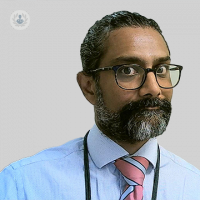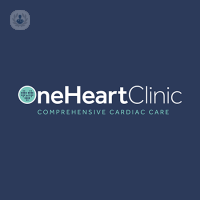Lipid disorders
Dr Ahmed Elghamaz - Cardiology
Created on: 03-01-2017
Updated on: 01-10-2024
Edited by: Conor Dunworth
What is it?
Dyslipidaemia involves unhealthy levels of fat in your blood and can cause atherosclerosis.
This can include an elevation of cholesterol or triglyceride levels, or a decrease of high-density lipoprotein levels in the blood. High cholesterol levels, together with other lipid and metabolic disorders, may lead to increased cardiovascular risks.

Dyslipidaemias can be classified as follows:
- Hypercholesterolemia: an increase in cholesterol levels
- Hypertriglyceridemia: an increase in triglyceride levels
- Hyperlipidaemia: a combined increase in both cholesterol and triglyceride levels
What are the symptoms?
Dyslipidaemias are generally asymptomatic and are diagnosed due to the conditions they contribute to, such as coronary heart disease, ischemia, peripheral arterial disease, pancreatitis and tendinous xanthomas.
Dyslipidaemias can also cause altered sensation in the limbs, shortness of breath, or a feeling of disorientation.
How is it diagnosed?
Dyslipidaemia is diagnosed by taking a blood test and checking triglyceride and cholesterol levels in the blood. It may also be necessary to measure glucose levels, TSH (Thyroid-Stimulating Hormone) levels and the amount of protein in the urine.
What causes dyslipidaemia?
There are two main causes for dyslipidaemia:
- Primary (or genetic) causes: genetic disorders may lead to an excessive or insufficient production of cholesterol and triglycerides;
- Secondary causes: these may be linked to an unhealthy lifestyle, such as smoking and overconsumption of foods rich in cholesterol, trans-fats and saturated fats. Dyslipidaemias can also be caused by diabetes, kidney and liver conditions, hypothyroidism, HIV or certain kinds of medication.
How can it be prevented?
You can reduce your risk of dyslipidaemia by leading a healthy lifestyle, including:
- eating more fibre and complex carbohydrates
- decreasing your cholesterol and saturated fat intake
- exercising regularly
- maintaining a healthy weight
What is the treatment?
People affected by dyslipidaemia often need to be treated for hypertension and diabetes as well. In order to reduce cholesterol levels you may be given medication or food supplements.
Which doctor should I talk to?
If you think you may have dyslipidaemia, you can talk to a dietician. If you have diabetes you can also talk to your endocrinologist or diabetes specialist.










